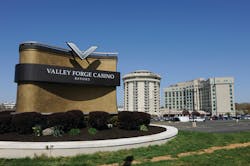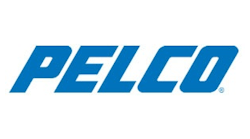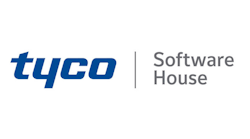It took just 22 minutes for the new IP video surveillance system at Valley Forge Casino Resort to demonstrate its value. The casino had just opened in March 2012 when an attentive surveillance operator identified a group of roulette cheaters — several agents working in tandem — from the clear images captured by the casino's IP surveillance system. A message from a nearby casino had alerted Valley Forge Casino to be on the lookout for the cheaters, and the employee spotted them on video less than half an hour after the casino opened. He had trained for eight weeks but had never worked in surveillance before.
Since that day, the video system — installed by North American Video (NAV) — has continued to provide value both on the gaming floor and throughout the facility located near the city of Philadelphia. “There is a human factor involved in creating a safe environment, and the tools and technology NAV has brought in give us a fantastic ability to protect our guests.,“ says Jesse Silva, Valley Forge’s Director of Surveillance. “We minimize every threat we can think of by using our video surveillance system to the fullest. It has provided the situational awareness we need to ensure a very low number of incidents in the first few months, and no major incidents so far related to guest safety.”
Standards-Based Surveillance Integrated with Access, POS
Valley Forge was constructed on the existing site of the Valley Forge (Pa.) Convention Center, with the convention center's top level now used as the casino. The $132.5 million resort features 600 slot machines and 50 table games, including blackjack, craps, roulette and others. The resort also includes live entertainment, eight restaurants, shopping and nightlife. In all, there are more than 100,000 square feet of meeting, convention and exhibit space. The adjacent Casino Tower and Radisson Hotel has 486 hotel rooms and suites.
The IP video system uses a redundant HP network with PoE and ONVIF-compliant equipment provided by Pelco, including the Endura recording system, Sarix fixed cameras and Spectra IV pan-tilt-zoom (PTZ) cameras — a total of 418 cameras in all when the casino opened. Additional cameras have been added since the opening to bring the total number to nearly 500. The system is integrated with a Software House access control system and a point-of-sale (POS) system from E>Connect. NAV was chosen to supply the system based on a competitive bid.
“The network designed at Valley Forge Casino is extremely sophisticated and robust, which in turn will allow them room for future IP growth and expansion,” says NAV’s Laurie Jackson, Vice President of Gaming Sales. “By integrating the access control, POS and video surveillance systems into an easy-to-manage overall system, casino management has a more complete picture.”
Inside the Surveillance Operation
The casino surveillance department's 20 operators watch table game action, cage transactions, ingress and egress of patrons, food and beverage locations, point-of-sale transactions, and general movement of employees in the back of the house. There are six surveillance workstations in all — two workstations in the security department, one in the administrative office, one in dispatch — each with a supervisor, and a separate on-site workstation used by the Pennsylvania Gaming Control Board.
Indoors, PTZ cameras can zoom in far enough to be able to read the serial numbers on a dollar bill or the time on someone's watch. Each blackjack table has a fixed overhead camera, and a PTZ camera is located between each pair of blackjack tables to cover both as needed. The other gaming tables are each monitored by multiple cameras. In the slots areas, cameras watch general movement and hone in on anything out of the ordinary.
Video keeps watch over gaming action on the casino floor as well as all back-of-the-house areas, including connecting hallways for the casino and cash handing areas. All gaming cameras are set at 30 frames-per-second (fps), while some non-regulated back-of-the-house applications, such as hallways or door views, use 15 fps.
Surveillance operators have access to all cameras, and a separate security department has access to cameras not monitoring the gaming floor. Security's responsibility is to patrol the entire property and the department uses the system to view cameras throughout the premises.
The resolution of the IP cameras is an improvement over analog, and Valley Forge is in the process of evaluating high-definition (HD) cameras to place strategically around the property. The first group of IP cameras was initially installed in the interest of keeping costs down. The network infrastructure could support as many as 1,000 cameras, although fewer will likely be needed as higher-resolution cameras are implemented.
Video views of any gaming tables are retained for seven days; and video covering cash-related transactions and access points to the casino is held for 30 days. There is plenty of RAID 5 system storage to meet the gaming commission's requirement of a 25 percent buffer margin of additional video archiving.
Outdoor Surveillance
Outside the building, exterior cameras mounted at various levels of nearby rooftops keep watch on the parking lot areas that surround the property, providing views to ensure guest safety and deal with issues in the parking lot such as accidents, animals or children left in vehicles, etc. Cameras are mounted on the roof of the convention center, on an attached office building, and on the adjoining Radisson Hotel and Valley Forge Casino Tower.
The 22x optical zoom on the Spectra IV camera enables operators to zoom in for clear images of vehicle license plates and activities in the parking lot, which accommodates 2,800 vehicles and has free valet parking every day. The cameras’ ability to “learn” a required position enables operators to direct the PTZ camera to an exact view he or she requires, and the camera can mimic the movement precisely, right down to the iris control and fine focus. Up to 99 camera positions can be stored as presets, and the operator can return to any of the positions by pressing two keys.
Endura's Linux-based software system offers unicast and multi-cast options to enable camera feeds to be multiplied for recording and live viewing on several components.
Systems Integration
NAV technicians and project leaders provided a deep understanding of the Pelco system during the installation, managing issues related to how the components communicate and interact with the network front-end. “The system has a workthrough for anything we want to do,” Silva says. “NAV's knowledge also helped to guide casino personnel during troubleshooting after the system was installed. In general, troubleshooting is easier with IP systems because software pathways enable one to check at any point on the network to see if a signal is passing through.” Silva adds that dealing with the integrator for ongoing service or equipment needs has been an “incredibly simple process.”
The Software House access control system covers all perimeter doors of the casino — about 20 in all — including those that usually remain closed. Integration provides camera views when access doors are opened, and alarms alert operators if a door is opened that should remain closed.
Access to the financial area (main cage and soft count area) involves a mantrap, so both doors cannot be opened at the same time. One door is controlled by surveillance; the other is controlled by an Aiphone video phone mounted on the wall to enable employees to grant access to any co-workers they recognize.
Integration with the E>Connect POS system transforms each line of point-of-sale transaction data into a hyperlink to related video of that exact second in time, which is “digitally married” to the POS system. If an operator clicks on the word “soda,” for example, the system goes immediately to video of that transaction.
Since state law requires all players to be guests of the resort (they may be staying there or simply have spent at least $10 in the resort), customer access to the casino floor is controlled. This is managed by 11 optical turnstiles/stantions that allow entry to the casino based on a required “daily access pass.” Inexpensive memberships for several months are available, which enables surveillance to identify any member who enters the casino, and a fixed camera provides a clear face shot as they walk through.
System Demonstrates Value
Beginning with the incident involving roulette cheaters on opening day, the IP surveillance system has proven its value at Valley Forge Casino Resort. The system was also useful to investigate a case of employee theft, and evidence was retrieved from the 30-day pool of archived video to highlight activity over an extended period of time. The Pelco interface for “storyboarding” enables clips of video from various cameras to be connected together to tell a story — a function that helped in the prosecution of the thieving employee.
Valley Forge has a Category 3 license from the Pennsylvania Gaming Control Board. The license means the casino is intended to support existing resort property, and there are. Although the size of the casino is currently “locked in,” pending state legislation could possibly change the rules on limits to the number of table games and slots allowed. Theoretically, the lower level of the convention center facility, still currently used for meeting space, could also be converted to casino space. Silva said he would use NAV for any future expansion. “I would go nowhere else,” he says.




